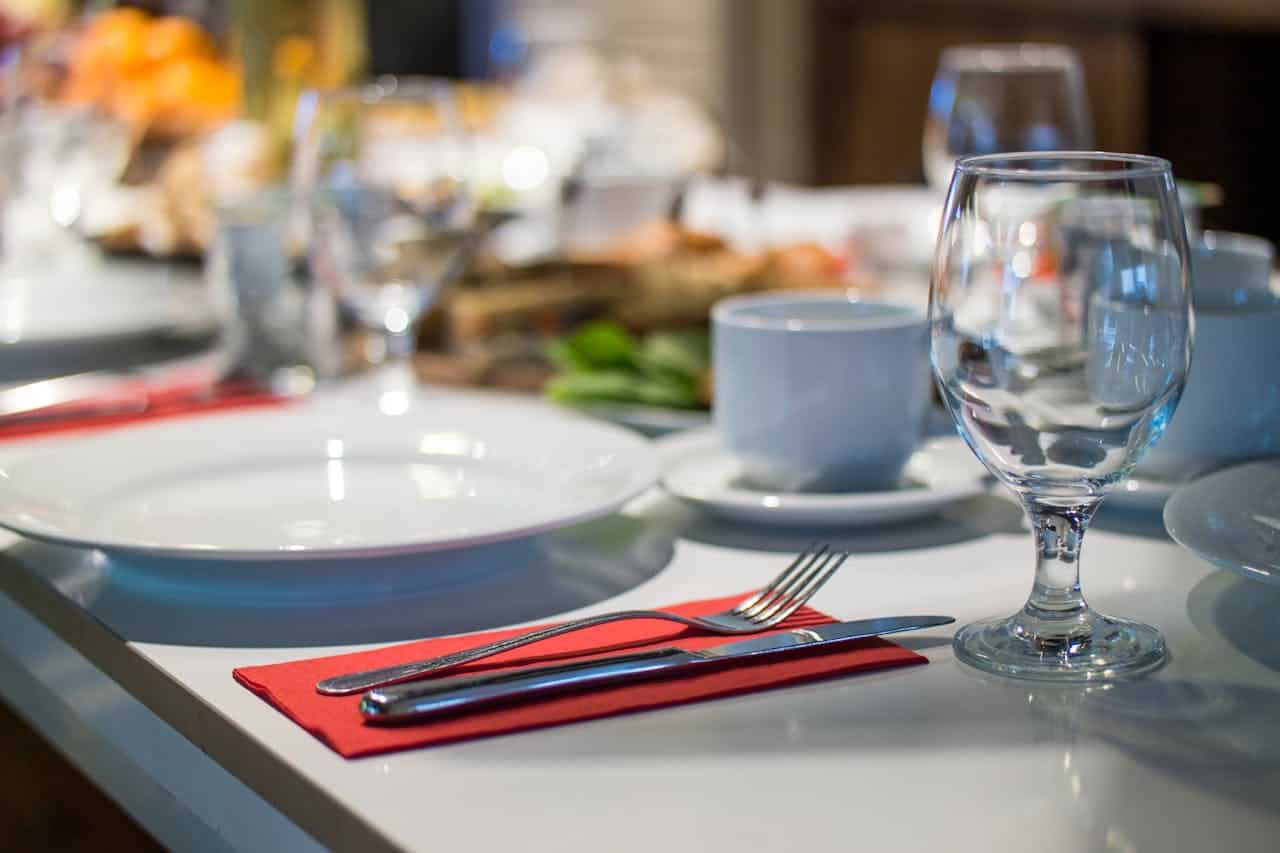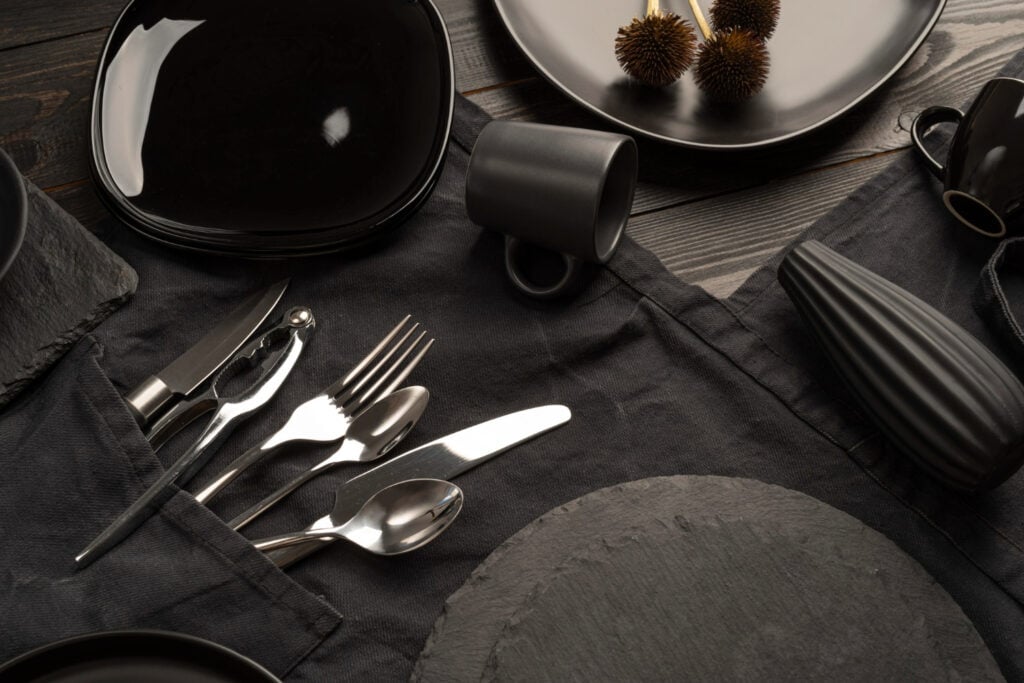
By Jermaine Thomas June 16, 2025
Presentation is just as important in the fast-paced catering industry of today as flavour. The dining experience can be greatly impacted by the presentation of the food. Social media and visual dining culture have made it more common for diners to view, take pictures of, and share their meals online in addition to tasting them. This change has made catering tableware more significant, transforming it from a purely practical element into an essential component of food storytelling.
Modern catering services are increasingly investing in sophisticated plating props and food display accessories that add character, contrast, and flair to dishes. Whether it’s a corporate event, a wedding, or a private celebration, the selection of tableware is now seen as a key design decision.
How Tableware Shapes First Impressions
Tableware is often the first thing a guest notices upon sitting at a table. Before the first bite, the overall visual presentation sets expectations. The texture of a plate, the sheen of a spoon, or the elegance of a charger can define how upscale or casual the event feels. In modern catering, this moment of first impression is meticulously designed.
The choice of catering tableware directly reflects the theme and tone of the event. For instance, a rustic outdoor wedding may lean toward wooden platters and enamel bowls, while a black-tie gala might opt for porcelain plates and polished silverware. These choices subtly communicate the organizer’s attention to detail. Beyond aesthetics, functional design matters too. Plates that frame food without overwhelming it, or utensils that balance in the hand comfortably, make the dining experience smoother. Clients increasingly look for a tableware style that aligns with both the visual theme and practical execution of the meal.

Elevating Plating with Creative Props
In high-end catering, the plating of food is more than just arrangement; it is an art form. Plating props play a central role in this visual craftsmanship. These are the creative elements used to support or enhance the appearance of the dish. From slate boards and marble slabs to miniature baskets and glass domes, the variety is endless.
Props help caterers design layered presentations that add texture, contrast, and dimension. A simple canapé can look dramatically different depending on whether it is served on a bamboo leaf or a mirrored tile. These nuances elevate the guest’s experience, encouraging not only better taste perception but also engagement.
Additionally, chefs can experiment with colour, height, and structure by using plating props. Elevated trays and tall risers highlight important buffet line items. Vibrant ceramic ramekins can add vibrancy to dips or sauces. Props are a creative extension of the food itself for many caterers, providing countless opportunities for creativity and personalisation.
Food Display Accessories and Themed Events
Beyond individual plating, the broader display of food at events is just as crucial. This is where food display accessories come into play. These include risers, display stands, chafing dishes, signage holders, and decorative trays that organize and present food offerings in a cohesive and appealing manner. In modern catering, especially for buffets and grazing tables, the layout and structure of food stations are thoughtfully designed. Instead of placing food flat on a table, caterers use tiered accessories to create vertical interest. This not only saves space but also guides the flow of guests in an organized manner.
Food display accessories are also vital in communicating the event’s concept. A beach-themed party might feature driftwood serving boards and shell-accented risers. A corporate product launch might employ clean lines, glass trays, and metallic finishes. By selecting display items that echo the theme, caterers can tie the food presentation into the larger visual story of the event.
Sustainable Choices in Tableware Selection
Sustainability is becoming a key factor in tableware decisions. As environmental consciousness grows among clients, caterers are increasingly moving away from single-use plastics and opting for reusable or biodegradable options. Bamboo plates, palm leaf platters, and recycled glassware are popular choices that combine style with eco-friendliness.
Selecting environmentally friendly catering tableware also communicates a message to the attendees. It shows a dedication to socially conscious event planning and establishes the host or brand as socially conscious. This value alignment is valued by today’s clients, particularly for eco-friendly weddings, wellness retreats, and community events.
There is also a rise in rental services that provide elegant yet sustainable options for tableware. This allows caterers to access a wide range of styles without the waste associated with disposable items. These services often include high-end plating props and food display accessories, making them a smart and stylish choice for modern caterers.
Fusion of Tradition and Innovation in Design
Contemporary catering presentation thrives on the blend of old and new. Tableware is no longer confined to traditional white china and standard silverware. Modern designs fuse cultural aesthetics with innovative shapes and materials to create a memorable impact.
For instance, Japanese-style ceramic plates with uneven glazing can be paired with Western food for a global visual appeal. Rustic stoneware platters can serve as neutral backdrops for colorful modern cuisine. This blending of traditions allows caterers to push creative boundaries while still anchoring their presentation in cultural familiarity.
This approach extends to plating props as well. Wire baskets inspired by farm markets or industrial-style metal trays nod to heritage while fitting into a modern setting. The idea is to let the tableware act as a canvas that enhances the food without overpowering it.
The Psychology Behind Visual Presentation
Scientific studies suggest that visual presentation influences how people perceive taste. When food is served on a well-designed plate, it is often rated as tastier and more satisfying than when served on a basic one. This phenomenon has been embraced by modern caterers, who understand that tableware affects both perception and mood.
Catering tableware has the power to stir feelings. While a bold black square plate might suggest modern sophistication, a pastel-colored plate might convey a sense of calm elegance. Likewise, elegant mirrored trays convey luxury, while whimsical food display accessories can add a playful element to kid’s gatherings.
The psychological impact also extends to portion control. Large plates with small food portions can make the meal seem less filling, while smaller plates with artful presentation can create a more fulfilling experience. Caterers use these cues intentionally to enhance guest satisfaction without altering the actual quantity of food served.
Tableware as a Branding Tool
For caterers and event planners, tableware can serve as a subtle but effective branding tool. The colors, textures, and styles used can reinforce the identity of a brand, a couple’s wedding theme, or a host’s vision. Every element on the table becomes part of a cohesive message.
Custom napkins, engraved cutlery, or branded plating props allow for storytelling through design. For corporate events, branding elements embedded in food displays can increase recall and associate the product launch or celebration with high-quality service. This is especially powerful in an age where event photos are widely circulated online.
Even for smaller caterers or home-based services, investing in unique food display accessories can help them stand out. A signature tray or a consistent visual language in presentation becomes part of the brand’s visual identity. This encourages client retention and strengthens market differentiation.
Practical Considerations for Tableware Selection
While visual appeal is essential, functionality cannot be overlooked. Tableware must be practical for the type of food being served, the format of the event, and the service logistics involved. Deep bowls might not work well for finger foods, and delicate glassware may be impractical for outdoor venues.
Caterers need to evaluate their menu in addition to their presentation strategy. The durability of catering tableware under various conditions, the weight of plating props, and the ease of stacking food display accessories are all factors to take into account. Choosing which items to use also involves considerations of cleaning and logistics of transportation.
Some caterers build modular tableware collections that can adapt to different types of events. These collections mix base pieces like neutral platters with bold accent items to create tailored presentations without overstocking supplies. This flexibility keeps costs down while maintaining a high standard of presentation.

Technology’s Influence on Table Presentation
Technology is subtly reshaping how caterers think about presentation. With 3D food printers, temperature-sensitive serving ware, and LED-lit display accessories, innovation is pushing the boundaries of what tableware can do. While still niche, these futuristic options are beginning to appear at high-profile events.
Social media also drives choices. Food is now photographed almost as much as it is eaten. Instagram-friendly presentation is a real consideration, which means catering tableware must not only be practical but also visually engaging under different lighting conditions. Augmented reality is also entering the catering world, allowing planners to preview how plating props and food display accessories will look in a given setting. These virtual previews assist in planning complex arrangements for large events and help ensure visual cohesion before the physical setup begins.
Conclusion
Tableware’s primary function in the contemporary catering industry has been greatly expanded. These days, it is a tool for sensory engagement, brand communication, and artistic expression. Presentation has emerged as a key component of the visitor experience, whether it is achieved through sophisticated catering tableware, creative plating props, or adaptable food display accessories.
The importance of carefully choosing tableware will only increase as customers continue to seek out distinctive and unforgettable events. Caterers can provide meals that not only satisfy appetites but also tell a story, stir feelings, and create a lasting impression by fusing creativity with tradition and beauty with functionality.
Ultimately, the future of food presentation lies not just in the kitchen but also in the curated details that surround it on the table.